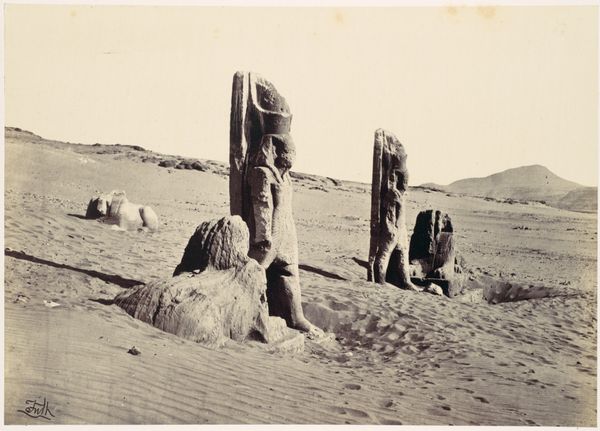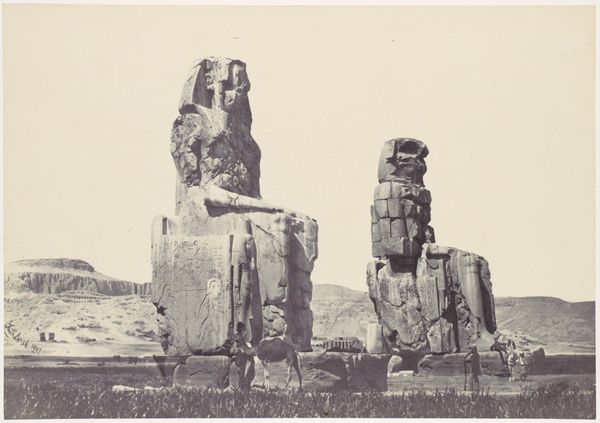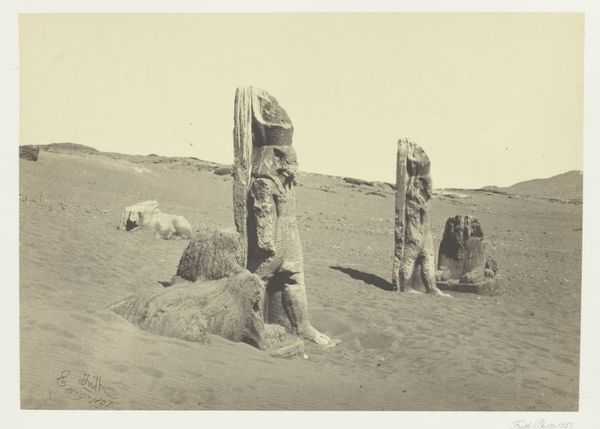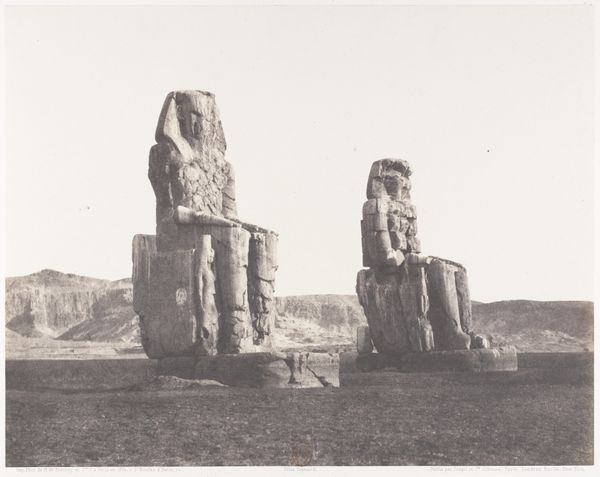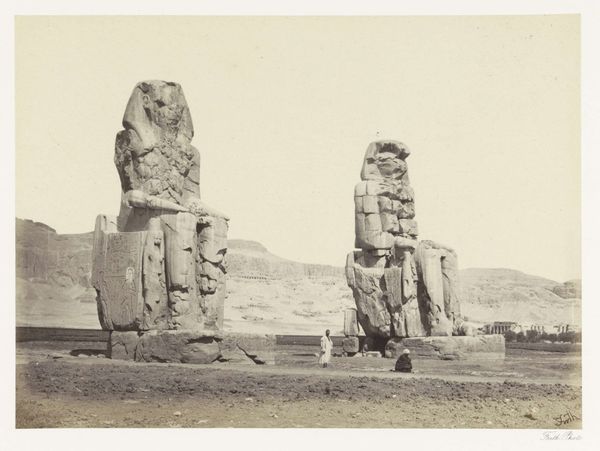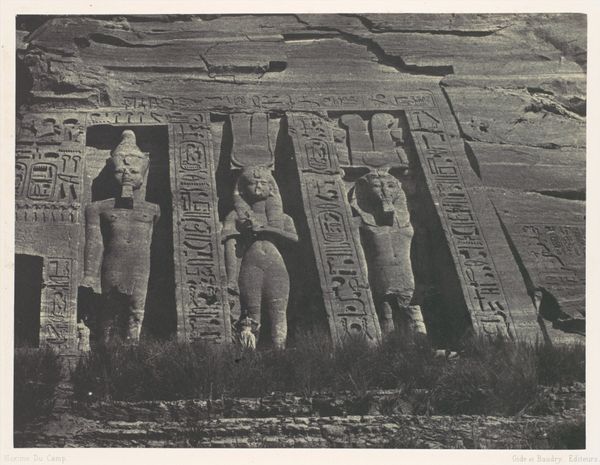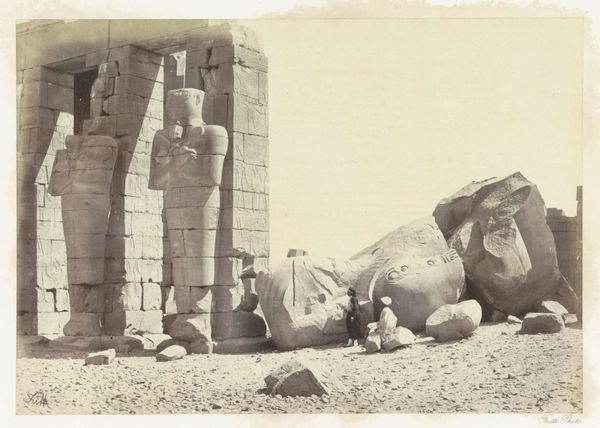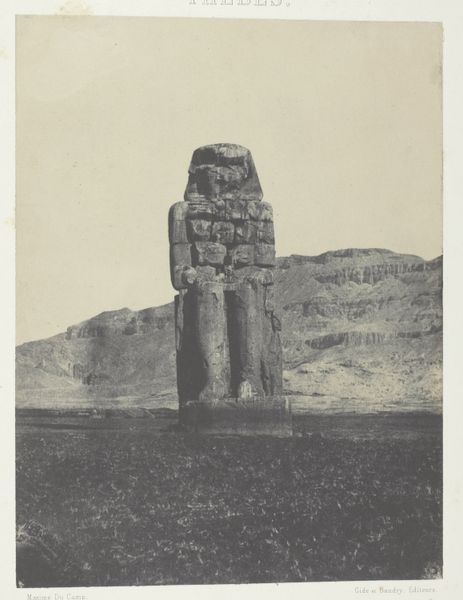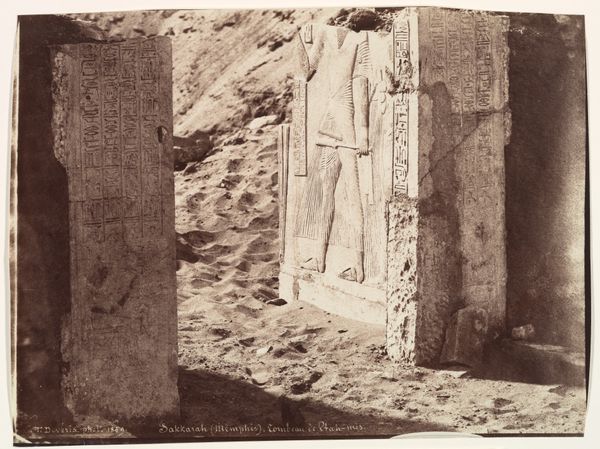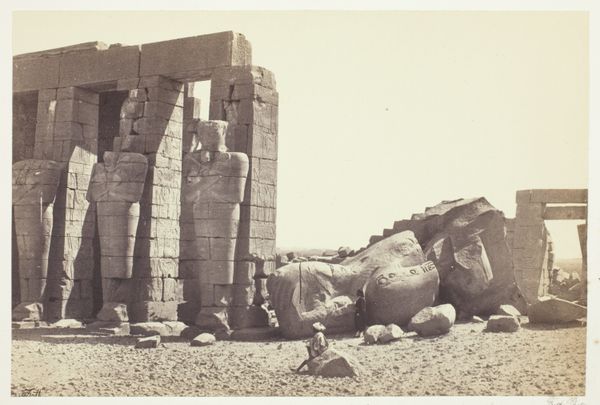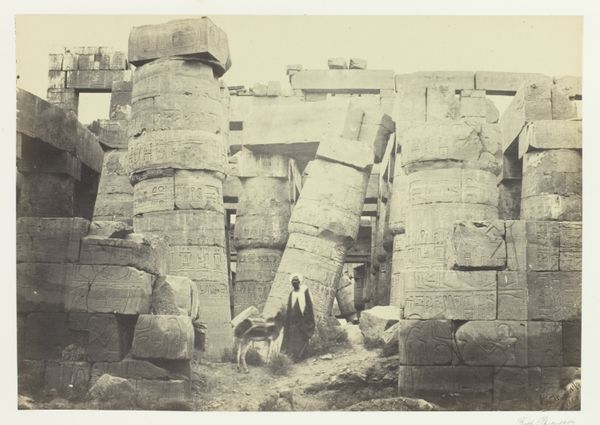
Séboûah, Temple, Colosse et Sphinx de la Partie Gauche de l'Avenue 1851 - 1852
0:00
0:00
print, photography, sculpture, gelatin-silver-print
# print
#
landscape
#
ancient-egyptian-art
#
photography
#
ancient-mediterranean
#
sculpture
#
gelatin-silver-print
#
history-painting
Dimensions: Image: 24 × 31.1 cm (9 7/16 × 12 1/4 in.) Mount: 37.9 × 50.2 cm (14 15/16 × 19 3/4 in.)
Copyright: Public Domain
Curator: This gelatin silver print, titled "Sèboûah, Temple, Colosse et Sphinx de la Partie Gauche de l'Avenue," was captured between 1851 and 1852 by Félix Teynard. It’s now part of the collection at the Metropolitan Museum of Art. Editor: It's like finding forgotten gods in a sandbox! The sepia tones give it an otherworldly feel, as though these stone figures are slowly re-emerging from a dream, or a long-lost memory. Curator: Precisely. The image presents us with a striking view of ancient Egyptian artifacts partially buried in the desert landscape. It allows us to reflect on how colonial photography was used to frame and document ancient cultures. What are the power dynamics at play here? How do we, as viewers, become implicated in the act of observing this scene? Editor: That's fascinating. But there’s also a certain tranquility, maybe even melancholia in seeing these grand relics overtaken by the sand. Like a whisper of time passing. The light is just incredible, sculpting those ruins with such a gentle hand. It is, literally, weathering the stones but burnishing the myth, too. Curator: It reminds us that history is never neutral. Teynard’s composition subtly positions the Western viewer as the privileged observer, holding the gaze over this landscape and its artifacts. We have to question whose story is being told, and who is telling it. Editor: Yeah, and maybe there’s also something beautiful about the desert slowly reclaiming these giants. It reminds me that even empires fade, stories shift, and nature always finds a way. But on a purely personal level, those contrasting textures just get me--the rough stone, the fine grains of sand... Curator: Consider, too, how the act of photographing transformed these objects. How did this colonial gaze shape our understanding of ancient Egypt, both then and now? Editor: This photo whispers to me. Whispering "resilience," whispering "cycles," whispering... well, it also whispers "pack a good sunscreen!" Curator: Indeed, it serves as a poignant reminder of our own positionality in relation to history and representation. We must challenge ourselves to look critically at these images. Editor: Ultimately, for me, it’s a potent and enigmatic image—a gorgeous dance of light, stone, and the irresistible force of time. It makes you want to run your fingers across the cool stone and listen to the desert winds telling its ancient stories.
Comments
No comments
Be the first to comment and join the conversation on the ultimate creative platform.
